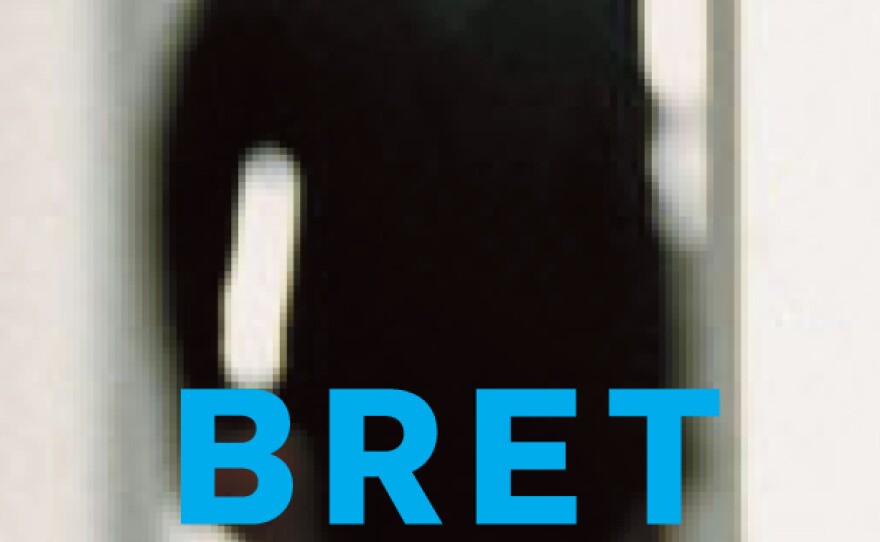
1 of 6
— 1Q84 by Haruki Murakami: "This epic, complex story begins when a woman named Aomame in 1984 Tokyo has a revelation that she has entered a universe parallel to our own. She calls it 'Q' for question, and in Japanese, Q rhymes with 9. I wanted to represent these two planes of existence with the book's jacket and its paper binding underneath."
1Q84 by Haruki Murakami: "This epic, complex story begins when a woman named Aomame in 1984 Tokyo has a revelation that she has entered a universe parallel to our own. She calls it 'Q' for question, and in Japanese, Q rhymes with 9. I wanted to represent these two planes of existence with the book's jacket and its paper binding underneath."
/ Courtesy of Chip Kidd/Alfred A. Knopf

2 of 6
— "The jacket is made of a semi-transparent vellum and holds part of the woman's image within the lettering of the title. Underneath is the complimentary image on the binding, and together they 'complete the reality.' Even if you don't know anything about the book when you first see it, you are forced to consider the concept of one person 'stradling' two states of being."
"The jacket is made of a semi-transparent vellum and holds part of the woman's image within the lettering of the title. Underneath is the complimentary image on the binding, and together they 'complete the reality.' Even if you don't know anything about the book when you first see it, you are forced to consider the concept of one person 'stradling' two states of being."
/ Courtesy of Chip Kidd/Alfred A. Knopf

3 of 6
— American Psycho by Bret Easton Ellis: "It always bothered me that the original cover of this book showed the main character's face so clearly straight-on. In fiction covers, I always want to give readers the chance to create what the characters look like in their minds as they read."
American Psycho by Bret Easton Ellis: "It always bothered me that the original cover of this book showed the main character's face so clearly straight-on. In fiction covers, I always want to give readers the chance to create what the characters look like in their minds as they read."
/ Courtesy of Chip Kidd/Alfred A. Knopf

4 of 6
— The Mind's Eye by Oliver Sacks: "This book by the renown neuro-scientist is about how eyesight works in the brain and how it doesn't. When the author goes to the optometrist for a checkup and the eye chart starts doing strange things, he knows there is a problem. It spurs him on to research the miraculous phenomena of how we see."
The Mind's Eye by Oliver Sacks: "This book by the renown neuro-scientist is about how eyesight works in the brain and how it doesn't. When the author goes to the optometrist for a checkup and the eye chart starts doing strange things, he knows there is a problem. It spurs him on to research the miraculous phenomena of how we see."
/ Courtesy of Chip Kidd/Alfred A. Knopf

5 of 6
— The Learners by Chip Kidd: "Since the narrator is essentially me, the cover is a kind of self-portrait — only I'm a terrible draftsman. So I hired the cartoonist and illustrator Charles Burns to draw it, and Chris Ware did the lettering. This is really intended to be 'The Scream' as rendered by two of the best contemporary artists in America."
The Learners by Chip Kidd: "Since the narrator is essentially me, the cover is a kind of self-portrait — only I'm a terrible draftsman. So I hired the cartoonist and illustrator Charles Burns to draw it, and Chris Ware did the lettering. This is really intended to be 'The Scream' as rendered by two of the best contemporary artists in America."
/ Courtesy of Chip Kidd/Alfred A. Knopf

6 of 6
— Life Upon These Shores by Henry Louis Gates, Jr.: "The author wanted an image 'out of time,' not specific to any one era, because the book spans centuries. I culled the conceptual emphasis from the word 'Looking' in the subtitle, and then augmented that with basic elements of the American flag."
Life Upon These Shores by Henry Louis Gates, Jr.: "The author wanted an image 'out of time,' not specific to any one era, because the book spans centuries. I culled the conceptual emphasis from the word 'Looking' in the subtitle, and then augmented that with basic elements of the American flag."
/ Courtesy of Chip Kidd/Alfred A. Knopf

/ Courtesy of Chip Kidd
/
Courtesy of Chip Kidd
Copyright 2012 NPR


